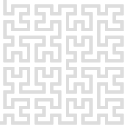qm
Differences
This shows you the differences between two versions of the page.
| Both sides previous revisionPrevious revision | |||
| qm [2025/03/28 13:13] – pklapetek | qm [2025/03/28 13:34] (current) – pklapetek | ||
|---|---|---|---|
| Line 6: | Line 6: | ||
| To make it work, a periodic excitation in the range of hundreds of nanometers has to be added to the cantilever motion, which allows the probe to snap in contact, measure a force-distance dependence in the contact, determine the maximum value of force for the feedback loop, leave the contact providing an adhesion value and then to repeat this process again and again. To make it work we need to use an additional shaker z-piezo or to combine internally the signal generator 1 (from lock-in 1) with 20-bit z-piezo signal and shake with the whole z-piezo. | To make it work, a periodic excitation in the range of hundreds of nanometers has to be added to the cantilever motion, which allows the probe to snap in contact, measure a force-distance dependence in the contact, determine the maximum value of force for the feedback loop, leave the contact providing an adhesion value and then to repeat this process again and again. To make it work we need to use an additional shaker z-piezo or to combine internally the signal generator 1 (from lock-in 1) with 20-bit z-piezo signal and shake with the whole z-piezo. | ||
| - | To use this mode with Gwyscope GUI, first adjust the probe signal the same way as you would do it in the [[contact|contact mode]]. Then switch to “QM” regime (while still being out of contact). Use " | + | To use this mode with Gwyscope GUI, first adjust the probe signal the same way as you would do it in the [[contact|contact mode]]. Cross-check in the [[settings|Settings]] (Read and set raw signals dialogue) that a low pass filter is set to some really low frequency, just to remove a mean value from our deflection signal, not to distort it. Then switch to “QM” regime (while still being out of contact). Use " |
| {{ : | {{ : | ||
| Line 30: | Line 30: | ||
| {{ : | {{ : | ||
| + | |||
| + | Here are some troubleshooting tips: | ||
| + | * start from larger shaking z-piezo amplitudes to make sure that probe gets out of contact between individual approaches. If it does, you can decrease the amplitude. | ||
| + | * Start from lower frequencies and larger forces. | ||
| + | * Even if the setpoint is entered in Volts, you can see the force on the graph. | ||
| + | * Cross-check if end of your evaluation limit is enough beyond the maximum position, otherwise you will not find the maximum. Check where the evaluated maxima and minima are on the lower graph. | ||
| + | * Remember that your feedback loop gets only single number per one period, so it is slower than in contact mode. | ||
| + | * To set-up the regime for the first time, use softer cantilever, stiff sample (e.g. any calibration grating) and care only for the feedback and adhesion, not for modulus. | ||
| + | * To get a reasonable modulus result, probe should elastically deform the sample, so stiffer cantilever and higher force will be usually better. When you will operate with these settings on a stiff sample, you might easily destroy the probe apex. | ||
qm.1743164034.txt.gz · Last modified: 2025/03/28 13:13 by pklapetek
